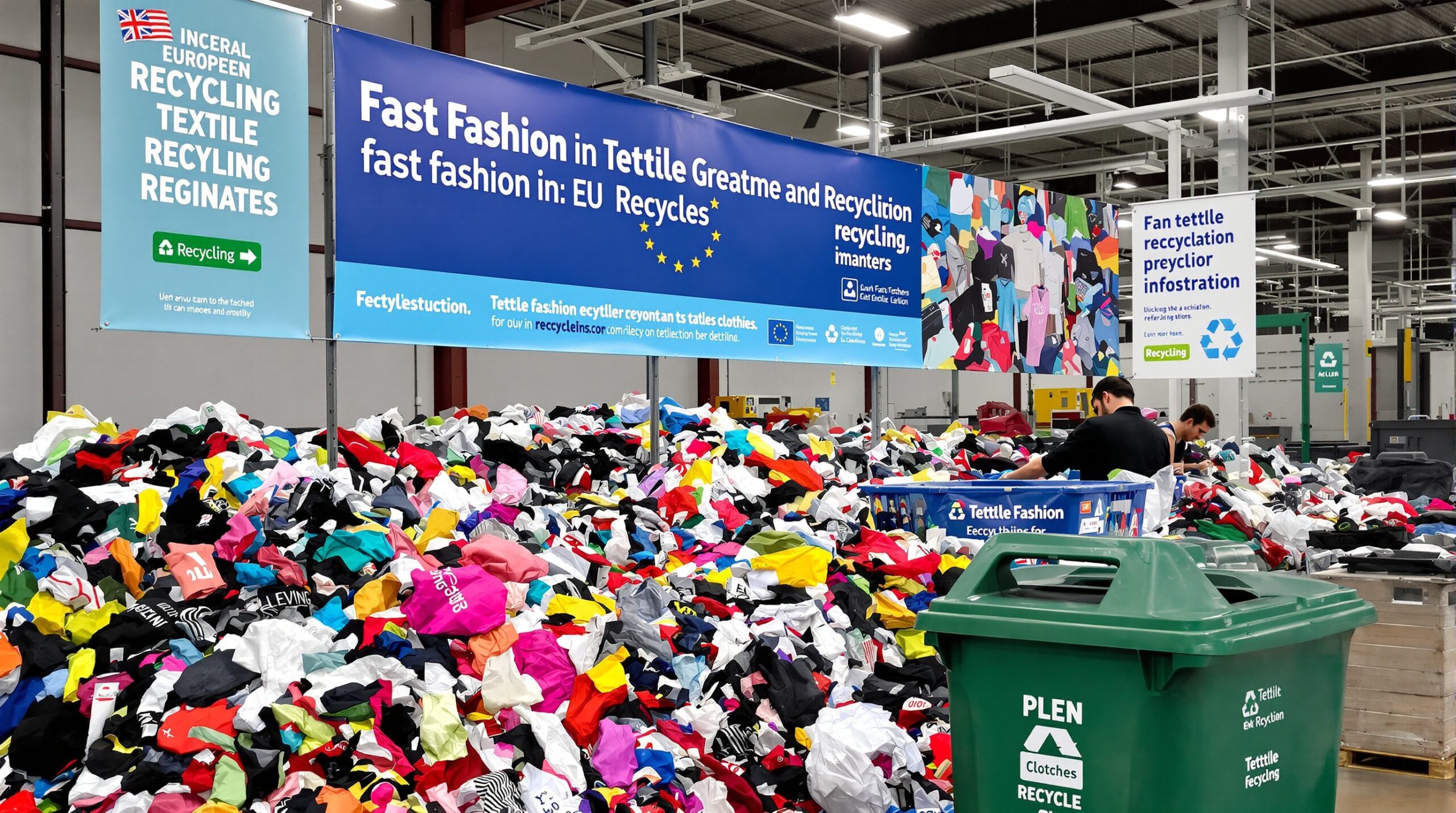The European Union has sharpened its focus on tackling the mounting problem of waste generated by the fast fashion industry. New mandates are set to revolutionize how textiles are produced, used, and disposed of. Policymakers believe that stricter regulations will drive sustainable change across the fashion supply chain. The rules promise to reshape business models and consumer habits in Europe and possibly beyond.
Understanding the Fast Fashion Waste Problem
Fast fashion allows consumers to purchase trendy clothes at low prices with rapid turnovers of style. This model encourages frequent buying and disposability, which has led to enormous textile waste. According to the European Environment Agency, Europeans discard about 11 kilograms of textiles per person annually. Most of these used garments either end up in landfills or are incinerated, causing severe environmental damage.
Textile production itself is resource-intensive, using significant amounts of water, chemicals, and energy. The environmental footprint grows every year as fast fashion booms. Concerns about pollution from dyes, microplastics, and greenhouse gases also dominate discussions around textile waste in the EU. The situation has prompted urgent calls for a cleaner, circular fashion system.
EU’s Response: New Rules for Textile Waste
The European Union’s 2023 Circular Economy Action Plan launched ambitious targets for textiles. Key revisions to the Waste Framework Directive aim to spur sustainable textile use. The forthcoming mandates will require all member states to collect textile waste separately by 2025. Uniform collection helps prevent textiles from mixing with general waste, making recycling more effective.
The EU also plans to introduce “extended producer responsibility” schemes for the fashion industry. Brands will be legally responsible for the end-of-life management of the clothing they produce. Companies must finance the collection, sorting, and recycling of used garments. The system encourages brands to design durable, repairable, and recyclable clothes from the outset.
To support these initiatives, the EU will develop minimum sustainability requirements for textiles. These criteria may include standards for recyclability and recycled content. Labels will give consumers more information about the environmental impacts of their purchases. The European Commission hopes transparency and accountability will drive more ethical and sustainable decisions throughout the textile value chain.
How the New Mandates Will Affect Industry
Fashion brands operating in the EU will face significant changes under these new regulations. Manufacturers must invest more in research and development for recyclable materials and designs. Companies may need to overhaul supply chains to comply with stricter traceability and environmental standards. Non-compliance could lead to penalties or restrictions in the EU market.
The rules also encourage innovation in textile collection and recycling businesses. Firms specializing in mechanical or chemical recycling will see greater demand for their services. Startups could emerge to provide repair, resale, or rental solutions for used garments. Smaller brands may face challenges adapting to costlier standards, but can stand out through sustainable practices.
Impact on Consumer Behavior
Consumers are central to the EU’s strategy for curbing textile waste. The mandates promote greater access to textile collection points and recycling programs. People will have more chances to donate or recycle unwanted clothes instead of throwing them away. Labeling requirements can guide shoppers toward more environmentally friendly purchases.
Consumer awareness campaigns will likely play a role, informing the public about the impact of fast fashion. Education seeks to shift fashion consumption toward more thoughtful, sustainable choices. Resale and repair initiatives could gain popularity, reinforced by EU policies and new business models. By promoting behavior change, the EU hopes to reduce waste and extend the lifespan of clothing.
Environmental Benefits and Progress Monitoring
The EU expects significant environmental benefits from its stricter textile regulations. Increasing textile recycling can lower landfill and incineration rates, conserving landfill space and reducing harmful emissions. When recyclers transform clothing into new fibers, energy and resource use drops compared to manufacturing virgin materials. Water use, chemical pollution, and microplastics generation can decrease as a result.
Policy implementation will be closely monitored at both national and EU levels. Authorities plan to collect data on textile waste and recycling rates each year. This information helps evaluate progress and identify best practices among member states. Adjustments to mandates may occur if targets are not being met or if new environmental concerns arise.
Challenges and Considerations for the Future
Executing the new textile waste mandates creates challenges. The recycling process for textiles is complex due to mixed fibers, chemical treatments, and varied designs. Investments in new technologies and infrastructure are needed to build effective recycling systems. Fashion brands, especially smaller ones, could struggle with increased costs, compliance, and supply chain adjustments.
International brands must consider how the EU’s regulations will impact their global sourcing and distribution. There is also concern about illegal exports of textile waste to developing nations, which often lack recycling infrastructure. Policymakers are seeking ways to enforce rules and control cross-border waste movements effectively. Partnerships with countries outside the EU may be necessary for a truly circular textile industry.
Looking Ahead: Setting an Example Globally
The EU’s mandates on textile waste aim to create a model for circular fashion worldwide. By making brands bear responsibility for the full lifecycle of products, the EU expects to inspire similar actions elsewhere. Other countries are observing how these rules impact both the environment and the economy.
Global collaboration will be vital for solving fashion-related waste and pollution problems. The EU continues to engage with governments and organizations to encourage sustainable approaches. As more consumers demand transparency and accountability, brands will be motivated to follow the EU’s lead regardless of their geography.
Conclusion
Fast fashion’s environmental cost has pushed the EU to establish comprehensive textile recycling mandates and industry responsibility. These rules redefine how clothing is produced, consumed, and recycled in Europe. Challenges remain, but the EU is determined to make a circular economy for textiles a reality. Success here could change the future of the fashion industry around the world.

